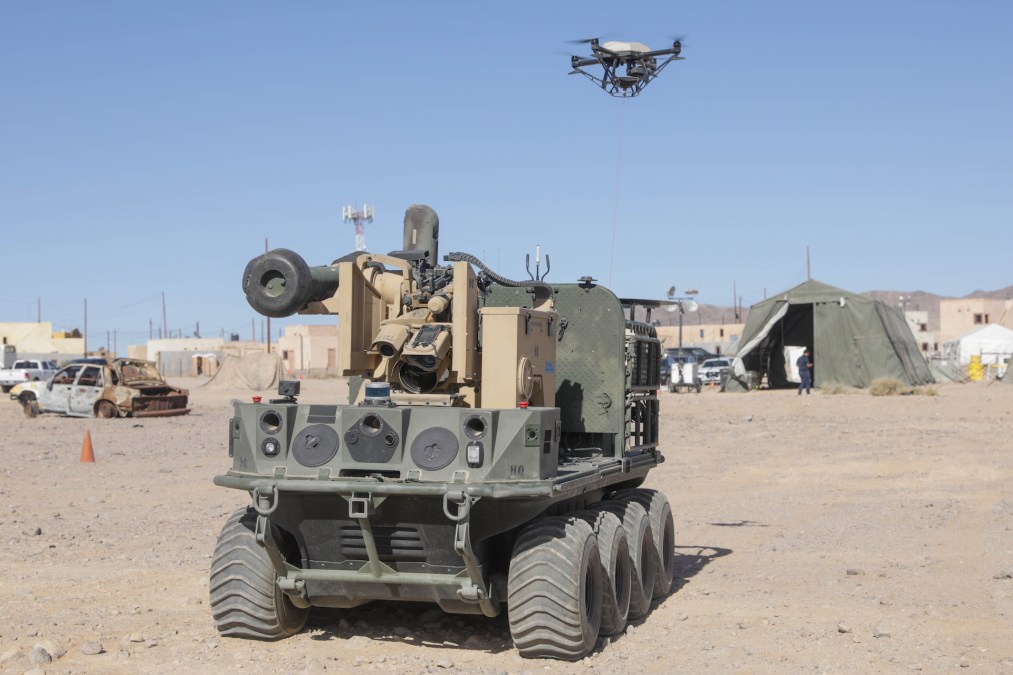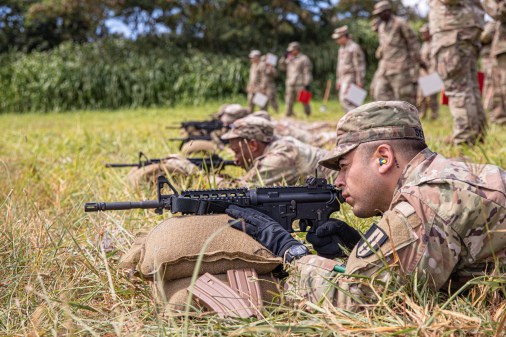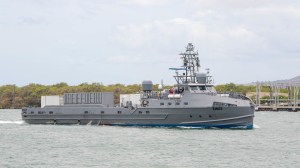Army finalizing plan for pursuing ‘human-machine integrated formations’

The Army is about to lay out a plan for a new Rapid Capabilities and Critical Technologies Office-led initiative focused on quickly getting deployable prototypes of autonomous and robotic systems into fighting formations, according to the head of the office.
The idea was the brainchild of the commander of Army Futures Command, Gen. James Rainey.
“About four or five months ago, he pulled me aside and said, ‘Hey, I’ve been thinking about this. And I want to use some of that RCCTO process … to try to see how we can accelerate our learning in the space of robotics and payloads — payloads being the key piece — and autonomy. And I don’t just want to do it like human-machine teaming where together they accomplish something. I want to have a series of continual learning where we can figure out … how to divide up the task at hand so that we optimize what humans do best on that values-based decision-making and what machines can do best. And we need to do it very, very quickly,’” Lt. Gen. Robert Rasch, director of the RCCTO, said Wednesday during remarks at the Space and Missile Defense Symposium.
Rasch has been tasked with creating an integrated solutions team for developing human-machine integrated formations and integrating cross-Army autonomous and robotics initiatives into operationally deployable prototypes, according to his slide presentation.
The service has been pursuing new drones, robotic combat vehicles and optionally manned fighting vehicles, artificial intelligence, and other enablers of autonomous systems.
The intent of the new RCCTO-led effort is to deploy “formation-based” capabilities, not just buy and test new equipment, and make infantry and armor companies more lethal and more survivable on the battlefield, Rasch noted.
“Deliverables” that will be pulled from other components of the Army enterprise include initial platforms, payloads and “autonomous behaviors.” There will also be rapid prototyping of additional systems to create an architecture for human-machine integrated formations, resilient network/enablers, and enhanced platforms, payloads and behaviors, according to Rasch’s slides.
The Army wants to quickly get capabilities into the hands of soldiers so they can provide feedback. The current vision is to “start small” with one or two platoons of mechanized and light units and then quickly scale capabilities to other formations.
Rasch’s slides included a diagram of notional “initial formation(s)” of human-machine integrated forces that could include two “control vehicles” overseeing four robotic platforms, for infantry brigade combat teams and armored brigade combat teams.
The RCCTO is about to meet with the Army “board of directors” — which includes the service’s secretary, chief of staff, vice chief of staff, undersecretary, acquisition chief, and the head of Army Futures Command — to flesh out how to proceed.
“We spent about the first three-and-a-half months trying to get our arms wrapped around it so that we can understand where’s the S&T, what’s the maturity of that technology that we can afford to pull up to do hardening of what typically to date has been demonstrator-type prototypes, but get something hardened that we can deliver to soldiers,” Rasch said of the RCCTO. “This effort is still in planning. And that board of directors I mentioned upfront, we’re going to see them here within the next 30 days to kind of lay out the plan for that activity.”






